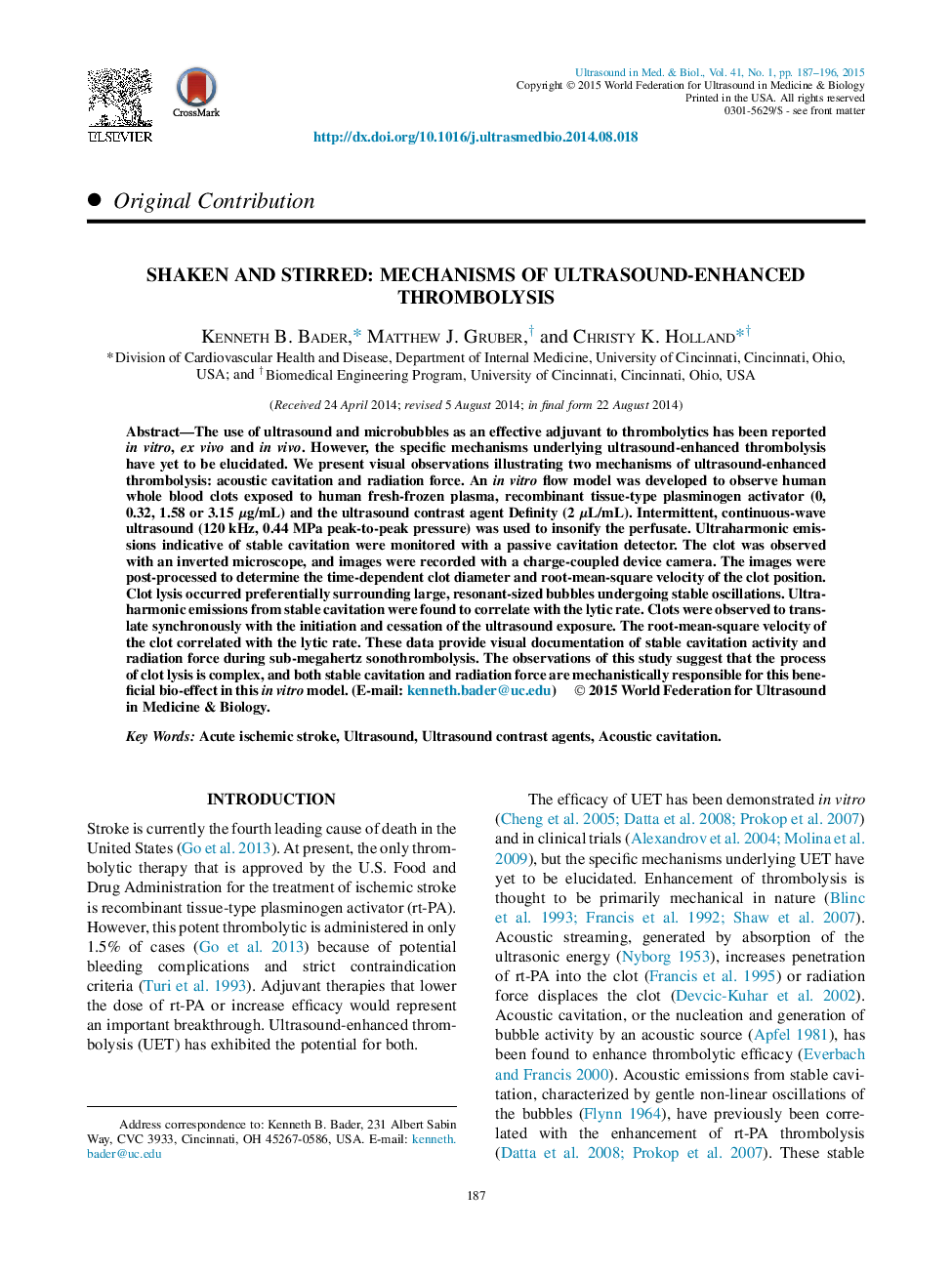| کد مقاله | کد نشریه | سال انتشار | مقاله انگلیسی | نسخه تمام متن |
|---|---|---|---|---|
| 1760422 | 1019590 | 2015 | 10 صفحه PDF | دانلود رایگان |
عنوان انگلیسی مقاله ISI
Shaken and Stirred: Mechanisms of Ultrasound-Enhanced Thrombolysis
دانلود مقاله + سفارش ترجمه
دانلود مقاله ISI انگلیسی
رایگان برای ایرانیان
کلمات کلیدی
موضوعات مرتبط
مهندسی و علوم پایه
فیزیک و نجوم
آکوستیک و فرا صوت
پیش نمایش صفحه اول مقاله

چکیده انگلیسی
The use of ultrasound and microbubbles as an effective adjuvant to thrombolytics has been reported in vitro, ex vivo and in vivo. However, the specific mechanisms underlying ultrasound-enhanced thrombolysis have yet to be elucidated. We present visual observations illustrating two mechanisms of ultrasound-enhanced thrombolysis: acoustic cavitation and radiation force. An in vitro flow model was developed to observe human whole blood clots exposed to human fresh-frozen plasma, recombinant tissue-type plasminogen activator (0, 0.32, 1.58 or 3.15 μg/mL) and the ultrasound contrast agent Definity (2 μL/mL). Intermittent, continuous-wave ultrasound (120 kHz, 0.44 MPa peak-to-peak pressure) was used to insonify the perfusate. Ultraharmonic emissions indicative of stable cavitation were monitored with a passive cavitation detector. The clot was observed with an inverted microscope, and images were recorded with a charge-coupled device camera. The images were post-processed to determine the time-dependent clot diameter and root-mean-square velocity of the clot position. Clot lysis occurred preferentially surrounding large, resonant-sized bubbles undergoing stable oscillations. Ultraharmonic emissions from stable cavitation were found to correlate with the lytic rate. Clots were observed to translate synchronously with the initiation and cessation of the ultrasound exposure. The root-mean-square velocity of the clot correlated with the lytic rate. These data provide visual documentation of stable cavitation activity and radiation force during sub-megahertz sonothrombolysis. The observations of this study suggest that the process of clot lysis is complex, and both stable cavitation and radiation force are mechanistically responsible for this beneficial bio-effect in this in vitro model.
ناشر
Database: Elsevier - ScienceDirect (ساینس دایرکت)
Journal: Ultrasound in Medicine & Biology - Volume 41, Issue 1, January 2015, Pages 187-196
Journal: Ultrasound in Medicine & Biology - Volume 41, Issue 1, January 2015, Pages 187-196
نویسندگان
Kenneth B. Bader, Matthew J. Gruber, Christy K. Holland,